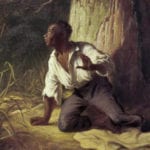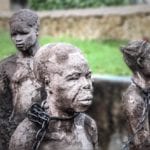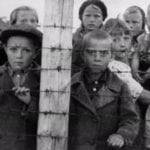 Animals
Animals  Animals
Animals  Weird Stuff
Weird Stuff 10 Weird Things People Used to Do at New Year’s
 Our World
Our World 10 Archaeological Discoveries of 2025 That Refined History
 Weird Stuff
Weird Stuff 10 Fascinating Facts You Might Not Know About Snow
 Miscellaneous
Miscellaneous Top 10 Things Crypto Was Supposed to Change & What Actually Did
 History
History 10 Huge Historical Events That Happened on Christmas Eve
 Music
Music 10 Surprising Origin Stories of Your Favorite Holiday Songs
 History
History 10 Less Than Jolly Events That Occurred on December 25
 Weird Stuff
Weird Stuff 10 Funny Ways That Researchers Overthink Christmas
 Politics
Politics 10 Political Scandals That Sent Crowds Into the Streets
 Animals
Animals 10 Species That Refused to Go Extinct
 Weird Stuff
Weird Stuff 10 Weird Things People Used to Do at New Year’s
 Our World
Our World 10 Archaeological Discoveries of 2025 That Refined History
Who's Behind Listverse?

Jamie Frater
Head Editor
Jamie founded Listverse due to an insatiable desire to share fascinating, obscure, and bizarre facts. He has been a guest speaker on numerous national radio and television stations and is a five time published author.
More About Us Weird Stuff
Weird Stuff 10 Fascinating Facts You Might Not Know About Snow
 Miscellaneous
Miscellaneous Top 10 Things Crypto Was Supposed to Change & What Actually Did
 History
History 10 Huge Historical Events That Happened on Christmas Eve
 Music
Music 10 Surprising Origin Stories of Your Favorite Holiday Songs
 History
History 10 Less Than Jolly Events That Occurred on December 25
 Weird Stuff
Weird Stuff 10 Funny Ways That Researchers Overthink Christmas
 Politics
Politics 10 Political Scandals That Sent Crowds Into the Streets
10 Horrifying Examples Of Modern-Day Child Slavery
Childhood is defined by culturally set boundaries which have changed throughout human history. The acceptable age to work varies depending on the culture, but child slavery is unanimously the worst form of child labor that exists and is unacceptable at any age in any country. There are millions of children trafficked around the world and forced into lives of depravity and despair. Here are 10 of the worst kinds of modern child slavery.
10 Dancing Boys Of Afghanistan
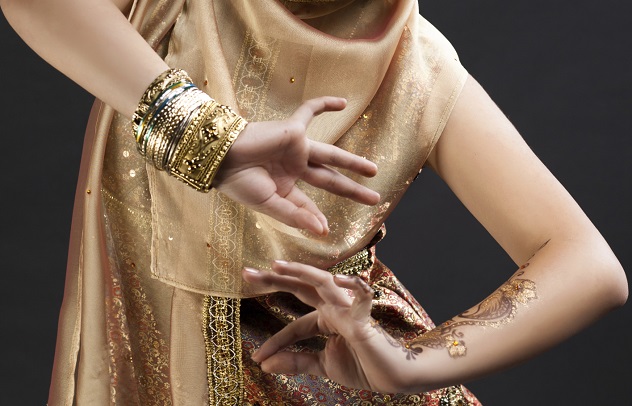
In war-torn Afghanistan, an ancient practice called Bacha Bazi has been revived in which young boys are taught to dance and sold to wealthy men. The translation means to be interested in children. Poor boys are exploited and become sexually abused slaves. It was banned by the Taliban and is still illegal under Afghan law. In a place where women are not allowed to dance in public, boys are made to wear women’s clothing and dance for groups of men. After the shows, the boys are often taken to hotels and subjected to sexual abuse.
Impoverished boys who have no fathers or live on the streets are particularly at risk. With no resources family who often need the eldest son’s financial support, the boys are drawn into the disturbing world of Bacha Bazi. The children, many of whom are no older than nine, are groomed by powerful merchants who lure them with the promise of a better life. Some men make their living roaming the streets, hunting for vulnerable children to recruit. The kids they find are given “jobs” as apprentices and the grooming begins. The practice is purely pedophilic—when the boys mature and grow beards, they are cast out. That life is all they know, and when no longer dancing, many become Bacha Bazi pimps themselves.
Bacha Bazi was thought to be a practice that occurred in the north of Afghanistan, but an internal investigation for UNICEF found evidence of it in the south and even in Kabul. Men in positions of power manipulate the system to prevent persecution. Police officers who run programs meant to protect children have been found attending the parties. Western men have been known to come to Afghanistan and take advantage of the boys. The lives of these children are completely ruined, they face violent backlash if they don’t agree to sexual demands, and they’ll likely be murdered if they escape.
9 Forced Beggars Of Senegal
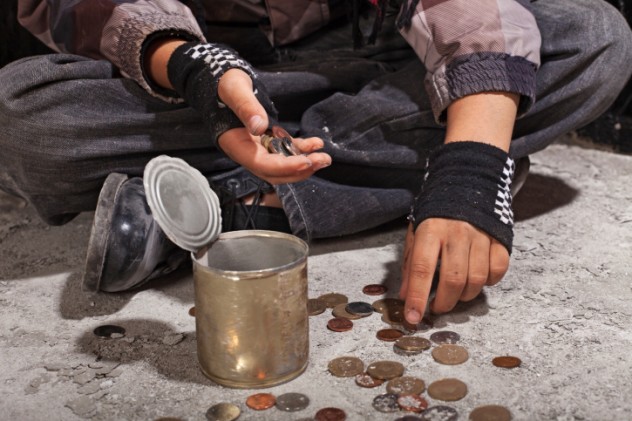
Not all children who beg on the streets are homeless. In Senegal, an estimated 50,000 children are being made to hit the streets and beg for money. Parents send their children to Quranic schools called daaras, where they are supposed to get an education guided by the Quran, overseen by a spiritual teacher known as a marabout. For many, this is all that happens, but all too many daaras are exploiting the students. Referred to as talibés, these students are forced to beg on the streets to earn money for their marabouts.
The talibés vary in age from four to 14. They’re sent out on the streets and have a daily quota of money to bring back to the marabouts. If they return shorthanded, the penalties are swift and harsh, from being chained in total isolation to violent beatings. The money ends up in the pockets of the marabouts and is not invested in the schools or the children. The talibés lack shoes and hold tin cans to collect their money as they wander the streets early in the morning to please their keepers. The marabouts hold immense sway, making the government reluctant to crack down. Activists want the Senegalese government to fast-track state-sponsored daaras, where traditional religious teachings can persist but forced child labor cannot.
8 Shrine Slavery In West Africa
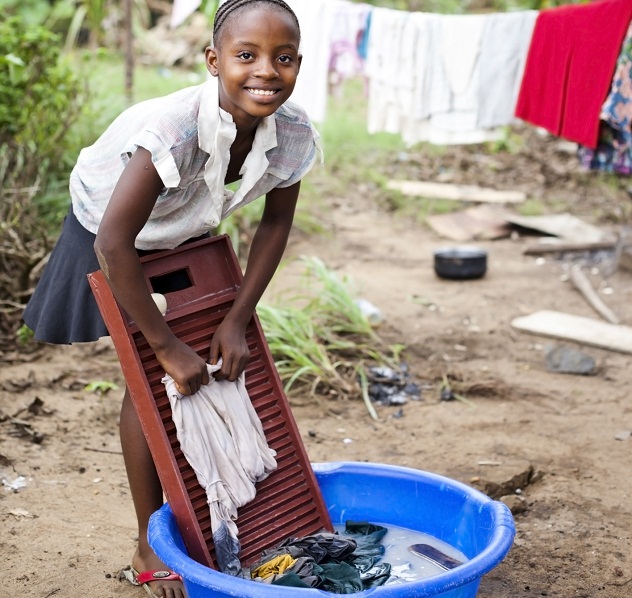
In West Africa, a form of ritual servitude carries on in traditional religious circles. The practice of Trokosi (which translates to “slave of the gods”) involves taking young, virginal girls into religious shrines to correct the misdeeds committed by their families. The girls are subjected to sexual abuse, forced hard labor, and a lifetime of shame. They are not allowed to keep any money. The girls’ families must provide the girls with food and clothing. Every aspect of their lives is controlled by the priests who run the shrines and the priests have only to answer to the gods and the shrine owners. The owners of the shrines are usually village elders and hold significant political and economic power.
The sexual abuse is no secret—the girls have to have sex with the priests whenever they demand. It is said that when the girl has sex with the priest, she is having sex with the gods who the priest serves. The girls are raped so often that priests can have dozens of offspring. This brings even deeper shame upon slaves because the community doesn’t see these children as legitimate, since the girls are married to gods and not to men.
If the family refuses to give up their daughter, the belief is that terrible things will happen to them. It isn’t restricted to immediate family—a terrible crime could require generations of virgin daughters being sent to the shrines. If a girl dies in servitude, the family is required to send another virgin daughter to replace her. Even if released by the priests, she can be forced to return to the shrine, because for the rest of her life, she is considered a slave to the gods. Even though the practice is illegal in countries like Ghana, it still carries on in secret.
7 Domestic Servitude Next Door
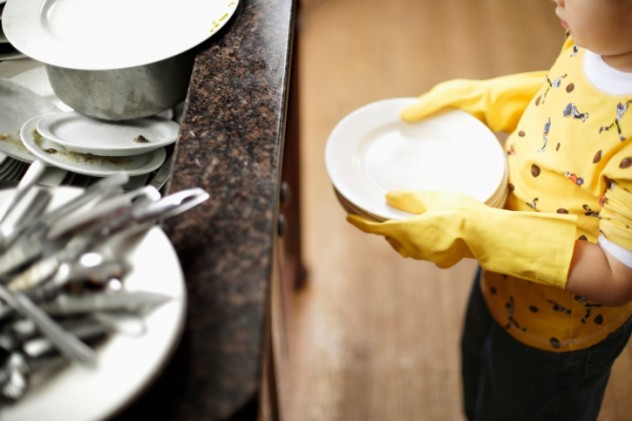
One of the most pervasive forms of modern child slavery is domestic servitude. A shocking 10.5 million children—71 percent of whom are girls and many of whom are as young as five years old—are estimated to be domestic workers around the world, and many of these children are held in slavery. They cook, care for children, garden, fetch water, clean, and anything else that needs done in the homes where they are employed.
It happens everywhere, including the United States. There are an estimated 50,000 slaves in the United States and an additional 17,500 are being trafficked into the country every year. That is more people being enslaved annually than during legal slavery in America’s dark history. Persecution is difficult because many cultures where the children live do not have clear cut distinctions between work and family duties, but these children are not treated as part of a family and the work they carry out is not equivalent to ordinary chores. Kept in isolation and subjected to physical and sexual abuse, domestic slaves are hidden from the outside and become dependent on their captors.
Terrifyingly, this kind of slavery can be happening next door to you and it would be hard to ever know. The stories almost always include a vulnerable, trafficked child who was lured into a family, where they became isolated and beaten into submission. The children have often been taken from foreign countries and have little to no knowledge of the native language. Such was the case of one young girl, Shyima, who was enslaved by a wealthy Egyptian couple in California. She knew nothing but the cruel conditions of sleeping in a garage and caring for a family of five—she couldn’t read when rescued years after her servitude began.
6 Cannabis Farms In Scotland
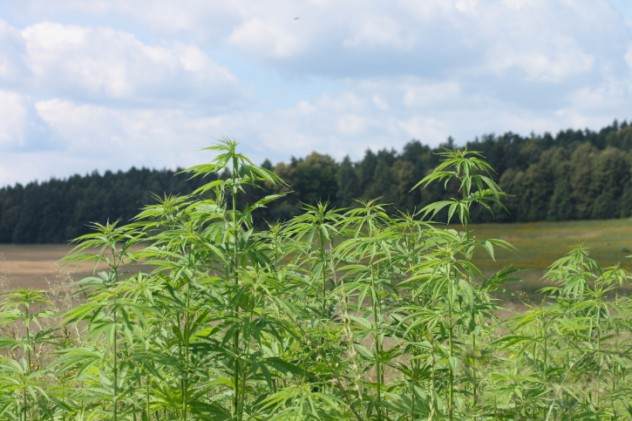
Children from places such as China and Vietnam are being trafficked into Great Britain and being forced to work in indoor cannabis farms throughout the island, many of which are located in Scotland. These farms are usually run by organized gangs inside gutted buildings, whose the windows are blacked out and doors are locked at all times. Children as young as 13 are kept inside 24 hours a day, where they have to tend to thousands of cannabis plants. An estimated 300 children are trafficked into the country every year, and justice system is failing these victims.
These children are not given any access to natural light, only knowing the day by the heat lamps that keep the plants growing, and are exposed to toxic chemicals that are used in the cultivation process. They face intimidation, violence, and extortion on a daily basis, often told by manipulative gang members that they will be freed when they’ve worked off the debts their families owe to overseas money lenders. The debts are sometimes real, but the ability to pay them off is not. One young victim, Min, was told that her captors would kill her grandmother if she tried to escape.
The UK is increasingly cracking down on cannabis farms, but the victimized children are not immediately helped by the raids. Instead, many children are being charged with cannabis cultivation and being sentenced to prison time. Min was one of those children, sentenced to 12 months in prison, and Hai Van Vo was another. Vo is an orphan from Vietnam who was promised restaurant work in Europe when he was trafficked into the UK. His captors said he had to work off the debt from the trip, so they locked him inside and made him become a “gardener.” When the farm was raided, Vo was sentenced to deportation after a 27-month jail term. Those children who don’t go to jail are put into foster care. While in care, the gangs that coerced them into slavery continue to harass them and scare nearly two-thirds of children into returning to the farms.
5 Camel Jockeys In The Persian Gulf

When you think of horse jockeys, you probably imagine very small people wrestling a speeding horse between their legs. It’s a similar situation with camel jockeys, only it’s children riding the camels and the children are slaves. An estimated 30 or more boys as young as two are abducted monthly from Pakistan to work as camel jockeys. The slave owners buy the children so young not because two-year-olds are good at riding camels, but because acquiring them at that age means there is more time to deliberately stunt their growth to prevent maturation and weight gain.
The children usually begin racing at the age of 10, even though it is illegal for anyone under the age of 14. If the boys don’t live up to their masters’ expectations, they can be tortured and left for dead. There is so much money in the endeavor that camel owners turn a blind eye to the violent abductions, instead focusing their attentions on disciplining and training their new slaves. The children who escape this nightmare face an uphill struggle, as the abuse they face at sensitive young ages can have lifelong effects, including severe mental and physical disabilities. UNICEF is working to end this phenomenon by encouraging the use of robot jockeys that jostle the camels to race.
4 Harvesting Child Organs

Taking advantage of the high demand for organ transplants, organized gangs have taken to trafficking children to sell their organs on the black market. One such young girl was abducted from Somalia and smuggled into the United Kingdom in 2013. Haiti became a hotbed of exploitation in the wake of the devastating 2010 earthquake, which left tens of thousands of children orphaned. Child trafficking was stated to be one of the biggest issues faced by aid workers as they struggled to reunite children with distant relatives and bring others into safe homes.
Even where strict regulations are placed on organ transplants, black markets thrive because people are desperate for transplants they fear may never come through legitimate means. An estimated 70,000 kidneys come annually from the black market worldwide. Reports on the prevalence of children being trafficked for organ harvesting are varied, but experts fear it is much more common than anyone knows. After all, gangs exploit the most vulnerable and invisible among us and supply a desperate demand. Sometimes, the children are never found after they vanish.
3 Forced Labor In The Mines
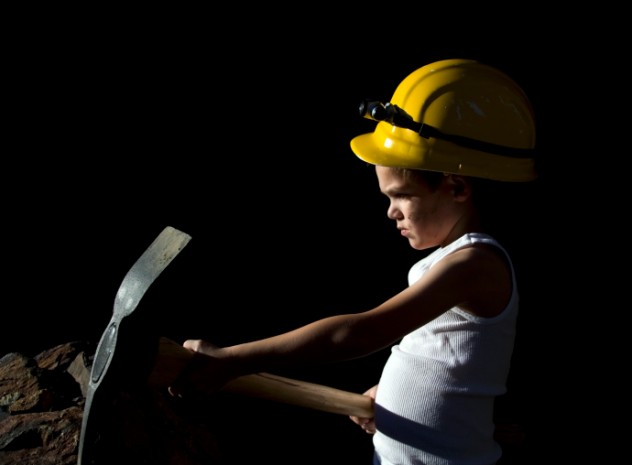
Mining is strenuous work and considered one of the most dangerous professions in the world. Long hours, hard physical labor, and often-cramped conditions can contribute to human errors in an already dangerous environment. If it is dangerous for well-trained adults in regulated mines, imagine how dangerous is it for the estimated one million children in Africa, Latin America, Europe, and Asia that work in unregulated mines.
From the age of three, children are intimidated and forced to work long hours for little to no pay. They toil in shifts of 24 hours at a time, while girls are often forced into prostitution. They are at a higher risk for short- and long-term health effects due to chemicals, dust, and deadly metals. Their growing bodies can become permanently deformed because they strain them carrying heavy loads. Their respiratory systems suffer due to constant dust inhalation, and the toxic chemicals and metals do serious damage to their nervous systems. The children are kept from school and have little or no access to healthcare services. The isolated locations of most mining communities contributes to the lack of police intervention and normal social protocols. Many of the fringe mining communities are rife with drug abuse and deplorable living conditions.
2 Child Soldiers In Armed Conflicts
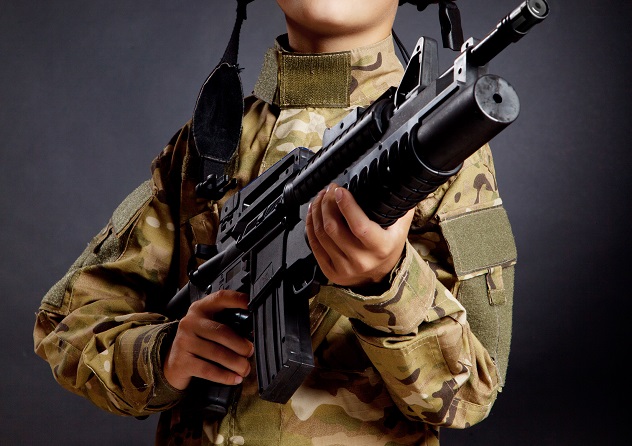
With the advent of light weapons, vulnerable children became the go-to soldiers for disgraceful armies that have nothing to lose. In terrorist cells, civil wars, and private armies around the world, hundreds of thousands of underage soldiers are being forced into bearing arms. They are easy to intimidate and take orders better than adults. Children are less aware of their rights and are usually looking to adults for guidance and care, so they’re less likely to run away. They can be kept in slave conditions because they sometimes know nothing else but that violent world.
These children become so conditioned to war that killing is as routine a part of everyday life as eating, drinking, or sleeping. Their malleable minds are brainwashed and they live in constant danger, killing on command. They come from war-ravaged villages and are often the only survivors after an attack, taken in by the attackers and forced into slavery. Some armies, such as the Burmese military regime, force them to perform slave labor in transport and construction when not on the front lines.
Those who escape, such as those who fled during the Sierra Leone civil war, are simply taken in and enslaved by the opposing side. They are forced to kill other children who try to escape. Sometimes, children who survive even face war tribunals. In Somali, children have been accused of war crimes instead of being liberated from their slavery.
1 Chocolate Slavery On The Ivory Coast
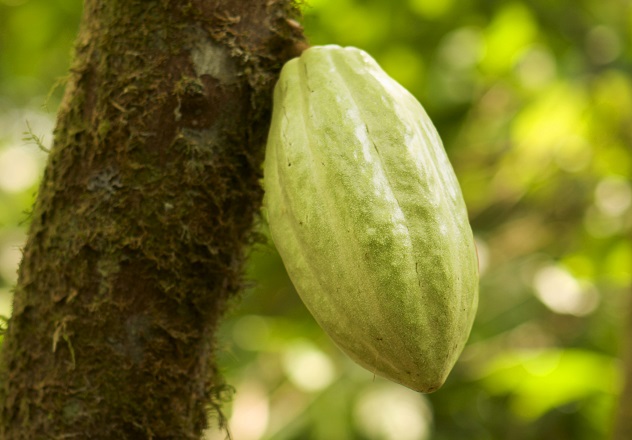
Most children light up when given a chocolate treat, but there are children who are slaves to the chocolate industry. They are so controlled and abused that many do not even know what chocolate is or what it tastes like. In places like Ghana and the Ivory Coast, where 60 percent of the world’s cocoa is produced, illegal child labor is carried out on a daily basis. Some children have parents who are cocoa farmers, but others are trafficked and forced into a life tending the fields.
The estimated 500,000 child slaves working in the cocoa fields live in depressing conditions. Often orphaned or homeless, they are smuggled by force or by promises of a better life. The children are so small that many tasks can’t be done without injury, like cutting grass with a machete.
No one is taking full responsibility—the government blames the cocoa industry, while the cocoa industry blames the government. Proposed legislation to guarantee slave-labor-free final products was shot down after intense pressure from industry giants. Horrifyingly, a BBC undercover journalist discovered that even when a chocolate bar is stamped with the Fairtrade seal of approval, there may still be child labor occurring during production.
When Kristance isn’t compulsively traveling the globe, she’s looking up weird facts and making awkward YouTube videos. An avid culture geek, she’s a trained anthropologist and archaeologist. Connect with her on Twitter or read about her adventures at diggingtoroam.com.



